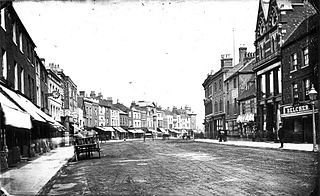
Edmund Clerihew Bentley, who generally published under the names E. C. Bentley or E. Clerihew Bentley, was an English novelist and humorist, and inventor of the clerihew, an irregular form of humorous verse on biographical topics.
Edward Ingress Bell (1837–1914) was an English architect of the late 19th century, and early 20th century, who worked for many years with Sir Aston Webb.
Reginald Halsey Birkett was an English footballer who played for Clapham Rovers, as well as the England national side. He also played international rugby union for England in 1871, in the first international rugby match. In this match he scored England's first try.

Frederick Stokes was the first captain of the England national rugby union team, who played for and captained the team in the first three rugby internationals, all between England and Scotland. He was also the youngest president of the Rugby Football Union.
Sir George Vandeleur Fiddes, was the British Permanent Under-Secretary of State for the Colonies.
Peter Felix Richards (1808–1868) was a pioneering Scottish merchant in Shanghai in the era following the Treaty of Nanjing. He founded the Richards Hotel and Restaurant, the first foreign hotel in China, and the forerunner to the Astor House Hotel.

Murray Marshall was a rugby union international who represented England from 1873 to 1878. He also captained his country.

Dawson Turner was a rugby union international who represented England from 1871 to 1875.

Henry John Cecil Turner was a rugby union international who represented England in 1871 in the first international match.
Francis Loraine Petre was a British civil servant in India and a military historian upon his retirement. He wrote a two-volume regimental history of the Norfolk Regiment, but is best known for his works on the Napoleonic Wars. The grandson of the 11th Baron Petre, he was educated at Oscott College and joined the Bar in 1880. He took the civil service exam and subsequently joined the Indian Civil Service. He retired as Commissioner of Allahabad in 1900.
Percival Wilkinson was a rugby union international who represented England in 1872 against Scotland in his only appearance for the national side.
Edward Forbes Walker was a rugby union international who represented Great Britain on the 1903 tour to South Africa. He represented Great Britain twice but never won a cap for his national side, England.
Edgar Geoffrey Stanley Hose was an English international hockey player.

St Mary the Virgin Church is located in Latton, Harlow, Essex, England. It is an Anglican church and is liberal catholic in tradition. The church building is Grade I listed.
Herbert Brooks, was an English rugby union footballer who played in the 1880s, who played in Scotland for Edinburgh University RFC, and was selected to play at a representative level for the British Isles on the 1888 British Lions tour to New Zealand and Australia, the first tour by a team representing the British Isles.
Louis Birkett was an English rugby union player who played for Clapham Rovers and was also selected to play for England. He was the younger brother of Reg Birkett and uncle of John Birkett.

John Player clockmakers was a watch and clockmaking business based in Reading in the 19th century. The business was founded by John Byard Player and was maintained on his retirement by his son John Player Junior. By 1846 John Byard Player had established his business in the centre of the town, making and selling timepieces from his premises at 28 Broad Street, Reading. He was a pacifist, a follower of John Wycliffe and a prominent Reading businessman.
James Genth (1849–1926) was a rugby union international who represented England from 1874 to 1875.
Sidney Parker was a rugby union international who represented England from 1874 to 1875.
Charles Clark was a rugby union international who represented England in 1875. Making his debut at just 19 years old, he scored the first international try in Ireland.









